 The holidays are fast approaching and one of the challenges for lots of folks is how to handle all the gatherings of different sorts that may seem more like obligations than fun.
The holidays are fast approaching and one of the challenges for lots of folks is how to handle all the gatherings of different sorts that may seem more like obligations than fun.
I’m lucky that I actually like my family and colleagues, but in case you happen to fall into the “obligations” category, Susan Auman (my friend and business partner at CBW), and I have come up with 10 tips for a Holiday SOS Toolkit. Here goes…
(1) Remember it’s temporary. One of my unfortunate college summer jobs was selling educational books door-to-door in California. One of the phrases I learned was Og Mandino’s “This too shall pass.” Pretty much all social events are time limited, or you can set your own time limit by deciding how long you’re going to stay.
(2) Orient to safe others. When arriving at your destination, look around for familiar and/or friendly faces. If there’s someone you know you prefer over the others, spend time talking with that person. Make a new friend, or bring someone along you know you enjoy being with. Continue to check for people who seem friendly or inviting. Sometimes those safe “others” might be 4-legged or leaf covered!
(3) Choose to notice what’s pleasant. In any holiday gathering there’s likely something that qualifies as pleasant – or at any rate less unpleasant than the rest. Maybe the food smells and tastes good? Is there a real live Christmas tree that smells like an evergreen forest? Maybe the holiday music is cheerful? Or maybe there are pleasing pictures on the w all or friendly pets to play with? Even small things can shift a generally unpleasant experience, but you have to look for them or they might pass you by.
all or friendly pets to play with? Even small things can shift a generally unpleasant experience, but you have to look for them or they might pass you by.
(4) Notice body tension and let it go. Difficult situations can make the body tense. Anxiety and stress generally show up as muscle tension in the body. Knowing the places you generally get tense can be helpful. If not, check for tension in your brow, jaw, shoulders, abdomen, pelvic floor or arms. You can choose to let go of tension in these areas. If your body’s not keen on letting go of tension you might have to consciously tense a little more (I know that sounds contrary), then stop your conscious tensing. Usually the muscles will let go – at least more than they did before.A little tip: your tongue can be an indicator of how tense you are. Tongue pressed fiercely up against the roof of your mouth? You’re probably revved up. Relax/soften your tongue and notice what happens in the rest of you…
(5) Move around! Bodies actually become more tense when forced to sit still. Moving around can ease some of the tension (freeze) in the body and help you to relax. Sometimes just stretching in place or moving at the joints can help. For example, rolling the shoulders, wrists and ankles or gently stretching the sides of your neck might not appear too strange and can relieve some tension in those areas. Less tension means the brain thinks you’re more relaxed!
(6) Take breaks. If you’re like me, your inner introvert gets a bit overwhelmed by all those nervous systems in one place. Or maybe you just get overstimulated by lots of activity, color & noise? Removing yourself may be as easy as taking a trip to the loo! (That’s the restroom btw). While you’re there, check on your muscle tension, do some breathing with nice long exhales to relax the body and maybe even check for something pleasant – magazines? nice soap? interesting wall art? :-)Depending on where you are, going outside “for some fresh air” might also be and ok way to escape for a while.
(7) Pre-plan for contact with the sane world. If you know you’re going to be in the midst of a chaotic or highly unpleasant crowd, plan with a friend you can text or call (on those trips to the loo or when you’re breathing fresh air). Sometimes you need someone else to remind you to breathe.
(8) Get helpful. I’ve found that purposeful activity can be very rewarding. Probably due to all that dopamine that gets created when you feel productive? Hosts are often happy for help and it’s sometimes also a way you can meet other people who are also helping.
(9) Plan an activity for the group. Directing the group in an activity can be a fun way of interacting, and also setting the tone of the gathering. Susan suggested the post-it note game. To play, you draw different characters on post-it notes and without the person knowing who the character is, each person gets a post-it on their back. Other people give people clues and each person has to try to figure out what their character is.
(10) Bring or wear something soothing. If all else fails, this is a back-up plan. Maybe you have a smooth stone that soothes you that you can keep in your pocket? Maybe there’s a lotion you like the smell of? Maybe a scarf with a texture you enjoy? Maybe your favorite colored shirt or tie or comfy shoes? Maybe your favorite tea? Maybe you can check in with your favorite meme or funny YouTube video on one of those trips to the loo.
Whichever activity you choose, make sure you’re mindful and focused on that. Leave any aggravation, frustration or stress behind and stay as much in the present moment as you can. Much of what we experience comes from what we choose to focus on. Whatever you celebrate, wishing you a wonderful, mindful, pleasurable Thanksgiving and very Happy Holidays.
 In a conversation with my mother-in-law this evening we laughed about how sometimes it feels like you can't even safely go into the backyard (for those who have a backyard). It's like the mind subconsciously views the entire "outside" as potentially dangerous.
In a conversation with my mother-in-law this evening we laughed about how sometimes it feels like you can't even safely go into the backyard (for those who have a backyard). It's like the mind subconsciously views the entire "outside" as potentially dangerous.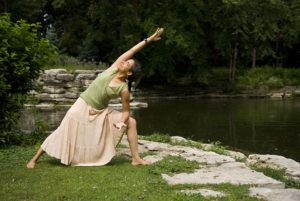
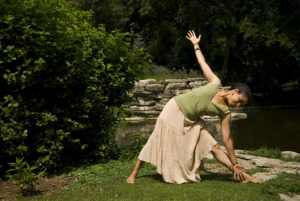
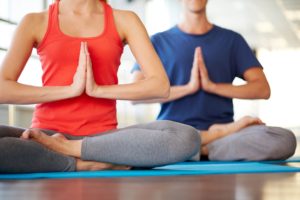 If the mind really wants to get involved, you might occupy it with the question: “Is this pleasant or unpleasant?” or “What feels good about this pose?” Let the mind be in service to the experience rather than spiraling out with judgments, shoulds, associations, plans or other elements that aren’t directly related to the experience you’re having now. Of course that spiraling might still happen, and you have the choice to follow, or to do something different. Instead of jumping on the “thought train,” you could acknowledge the mind, give thanks that it can do what it does, and then gently direct your attention back to the sensory experience of the moment.
If the mind really wants to get involved, you might occupy it with the question: “Is this pleasant or unpleasant?” or “What feels good about this pose?” Let the mind be in service to the experience rather than spiraling out with judgments, shoulds, associations, plans or other elements that aren’t directly related to the experience you’re having now. Of course that spiraling might still happen, and you have the choice to follow, or to do something different. Instead of jumping on the “thought train,” you could acknowledge the mind, give thanks that it can do what it does, and then gently direct your attention back to the sensory experience of the moment. The holidays are fast approaching and one of the challenges for lots of folks is how to handle all the gatherings of different sorts that may seem more like obligations than fun.
The holidays are fast approaching and one of the challenges for lots of folks is how to handle all the gatherings of different sorts that may seem more like obligations than fun. all or friendly pets to play with? Even small things can shift a generally unpleasant experience, but you have to look for them or they might pass you by.
all or friendly pets to play with? Even small things can shift a generally unpleasant experience, but you have to look for them or they might pass you by.
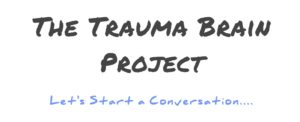 I recently had the honor of being on a panel of body-centered therapists following the reading of a play by Dayle Ann Hunt titled The Trauma Brain Project.
I recently had the honor of being on a panel of body-centered therapists following the reading of a play by Dayle Ann Hunt titled The Trauma Brain Project.

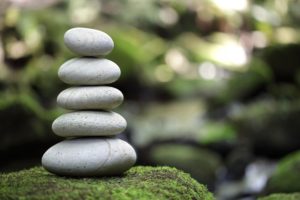 How are you feeling now? You can repeat that sequence one more time if you’re feeling a little more focused or settled than you were before you started.
How are you feeling now? You can repeat that sequence one more time if you’re feeling a little more focused or settled than you were before you started.
